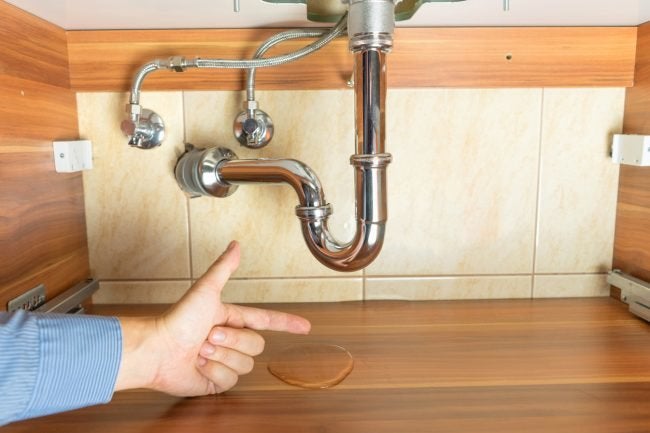Overview To Water Leakage Detection At Home
Overview To Water Leakage Detection At Home
Blog Article
We've unearthed this article relating to Detecting hidden plumbing leaks directly below on the web and believe it made perfect sense to write about it with you in this article.

Early discovery of leaking water lines can mitigate a potential calamity. Aside from saving you money, it will lessen the aggravation and also frustration. The minute you locate a leak, calling your plumber for repairs is the most effective remedy. Some small water leakages might not be visible. Below are some hacks that help if you can not find it with your nude eyes.
1. Check Out the Water Meter
Every house has a water meter. Checking it is a surefire way that helps you discover leaks. For beginners, turn off all the water sources. Make sure nobody will purge, utilize the faucet, shower, run the cleaning equipment or dishwashing machine. From there, go to the meter and watch if it will change. Since no person is utilizing it, there must be no movements. That shows a fast-moving leak if it relocates. If you identify no changes, wait an hour or 2 and check back again. This suggests you may have a slow leakage that could also be below ground.
2. Inspect Water Usage
If you spot sudden changes, despite your consumption being the very same, it suggests that you have leaks in your plumbing system. An abrupt spike in your bill indicates a fast-moving leak.
A stable increase every month, even with the same habits, reveals you have a slow-moving leakage that's likewise slowly escalating. Call a plumber to thoroughly examine your residential or commercial property, particularly if you feel a warm location on your flooring with piping beneath.
3. Do a Food Coloring Test
When it comes to water consumption, 30% comes from commodes. If the color somehow infiltrates your dish during that time without flushing, there's a leak in between the container and also bowl.
4. Asses Exterior Lines
Don't fail to remember to check your outside water lines also. Ought to water permeate out of the link, you have a loose rubber gasket. One small leak can squander lots of water and also increase your water bill.
5. Examine the scenario and examine
Home owners should make it a routine to examine under the sink counters and even inside cabinets for any type of bad odor or mold and mildew development. These 2 warnings show a leak so punctual attention is needed. Doing routine assessments, also bi-annually, can conserve you from a significant trouble.
Inspect for discolorations and weakening as a lot of pipes as well as devices have a life expectations. If you presume leaking water lines in your plumbing system, don't wait for it to rise.
Early discovery of leaking water lines can mitigate a possible catastrophe. Some small water leakages might not be visible. Checking it is a proven method that helps you uncover leakages. One tiny leakage can lose lots of water and increase your water expense.
If you suspect dripping water lines in your plumbing system, don't wait for it to escalate.
WARNING SIGNS OF WATER LEAKAGE BEHIND THE WALL
PERSISTENT MUSTY ODORS
As water slowly drips from a leaky pipe inside the wall, flooring and sheetrock stay damp and develop an odor similar to wet cardboard. It generates a musty smell that can help you find hidden leaks.
MOLD IN UNUSUAL AREAS
Mold usually grows in wet areas like kitchens, baths and laundry rooms. If you spot the stuff on walls or baseboards in other rooms of the house, it’s a good indicator of undetected water leaks.
STAINS THAT GROW
When mold thrives around a leaky pipe, it sometimes takes hold on the inside surface of the affected wall. A growing stain on otherwise clean sheetrock is often your sign of a hidden plumbing problem.
PEELING OR BUBBLING WALLPAPER / PAINT
This clue is easy to miss in rooms that don’t get much use. When you see wallpaper separating along seams or paint bubbling or flaking off the wall, blame sheetrock that stays wet because of an undetected leak.
BUCKLED CEILINGS AND STAINED FLOORS
If ceilings or floors in bathrooms, kitchens or laundry areas develop structural problems, don’t rule out constant damp inside the walls. Wet sheetrock can affect adjacent framing, flooring and ceilings.
https://www.servicemasterbyzaba.com/blog/how-to-detect-water-leakage-in-walls/

I hope you enjoyed reading our piece on Leaking water lines. Thank you so much for taking time to browse our posting. If you appreciated our article kindly don't forget to share it. Thanks for your time. Kindly check our site back soon.
Report this page